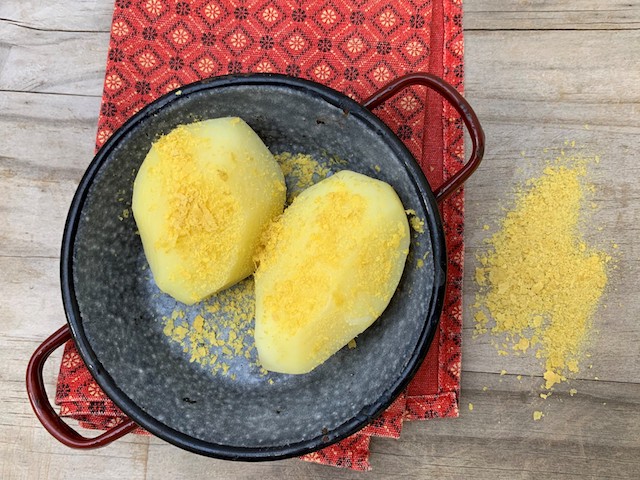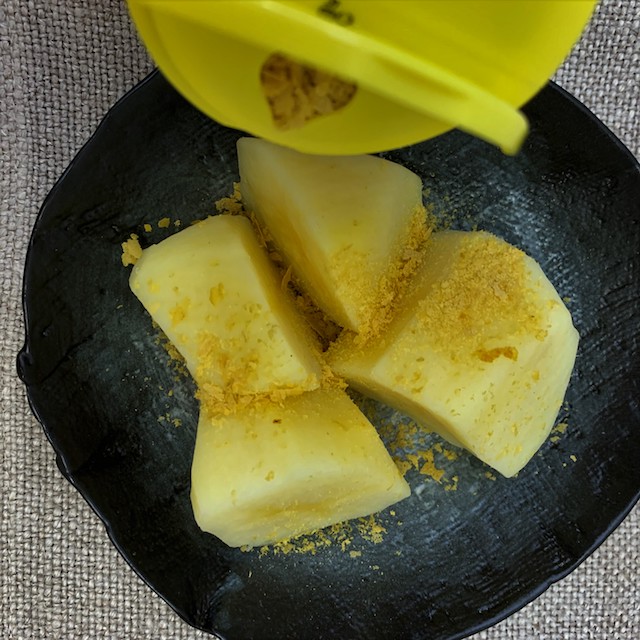- Home
- Blog
- Healthy Eating for Wellness
- What the heck is nutritional yeast?
What the heck is nutritional yeast?
Written by Catherine Saxelby
on Wednesday, 08 April 2020.
Tagged: flavour, health, healthy cooking, healthy eating, healthy lifestyle, msg, nutrition

I’ve heard about nutritional yeast, or yeast seasoning, more than a few times now. It's been around for a long time in vegan and vegetarian restaurants and for good reason: fortified nutritional yeast provides a rare non-animal source of vitamin B12. So, what actually is it and what can you use it for?
Even though I could read up about it, there’s no shortcut to actually buying it and having a try. Which is what I’ve done - although I suspect that a 127 gram (4.5oz) jar of the flakes will last me for years, probably past the use-by-date of 5/2022!
What’s in it?
According to Wikipedia, nutritional yeast is made by ”culturing a yeast in a nutrient medium for several days. The primary ingredient in the growth medium is glucose, often from either sugarcane or sugar beet molasses. When the yeast is ready, it is deactivated with heat and then harvested, washed, dried and packaged.”
Different from Brewer’s Yeast
Don’t confuse it with:
- brewer’s yeast, a by-product of breweries and distilleries, or
- yeast extract spread (Vegemite, Marmite) which has a strong flavour and comes in the form of a thick dark-brown paste.
Nutritional yeast is the inactivated form of a strain of yeast called Saccharomyces cerevisiae, in other words, it can no longer ferment. It is the same species as baker’s and brewer’s yeast, though they are all different strains of that species.
Many love its salty, nutty and slightly cheesy taste and it makes a great vegan alternative to Parmesan cheese.

Pros
- Think of it as a seasoning or condiment, not an ingredient, and you’ll start off right.
- It’s a healthier sprinkle than salt as it is free of added salt and sports a tiny 50 mg of sodium per 100 grams. In contrast, table salt, which is sodium chloride, has some 400 mg sodium per 100 grams. If you’re trying to cut down your salt, this makes a healthy low-sodium seasoning.
- If fortified, it provides a non-animal source of vitamin B12 – a vitamin often in short supply in the diets of vegans.
- If fortified, it gives you a good supply of all the B vitamins – check the label for the B vitamins such as riboflavin and niacin as ingredients.
- It is nutritionally-rich. As well as B vitamins, nutritional yeast contains magnesium, copper and manganese.
- It comes in the form of form of flakes, granules or powder. I bought mine in a sprinkle container, like a large salt container.
- You can add it to just about anything from cooked vegetables to mash to soup. Even popcorn.
- It adds umami, that savoury broth-like undertone often referred to as the fifth taste. Similarly, to salt, it enhances the overall savouriness of a dish, although it contains little sodium.
- It’s high in fibre (around 20 per cent).
- It’s high in protein (around 50 per cent) and is a complete protein containing all nine essential amino acids which is important for vegans.
Cons
- It doesn’t look and taste like salt flakes or anything similar. It’s yellow in colour with a strong cheesey aroma. It looks a little like fine flakes of grated Parmesan cheese, or that yellow dust that gets all over kids’ hands when they eat cheesey snacks. If you eat it straight off the spoon, it tastes dry and sticks to the roof of your mouth.
- Lots of food miles as it comes from overseas. The Bragg product I used came from the USA and other brands I found came from Estonia.
- You have to add LOTS to get the same flavour as a little salt. Yes, it tastes salty but also cheesey.
- You’ll pay over 100 times more for a jar of nutritional yeast than for a plain salt from a supermarket. And around 10 times more than for a 50% reduced salt Lite Salt from a supermarket.
- No amounts are given. My best estimate is that 1 tablespoon of nutritional yeast is equivalent to a good pinch of salt, but you use lots.
- The fortified yeast is the one that provides the most B vitamins but these vitamins are not natural, they are synthetic.

The bottom line
This is a handy sprinkle to use if you’re trying to cut down on salt OR are a vegan looking for a nutrient-rich addition to your diet. Apart from the cost, it’s a handy addition.
Foodwatch
The Good Stuff
The Boring Stuff
© 2025 Foodwatch Australia. All rights reserved
Website by Joomstore eCommerce





